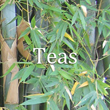
In Asian countries, tea drinking is an ancient practice the day-long. To satisfy thirst for liquids and a specific taste, as part of a meal, or for medicinal purposes, tea has been revered since ca. 2000 BCE. Early on, herbal teas were drunk after meals as digestives or to add a special flavor to the palate, when socializing, when reading poetry, to keep warm.
Books written about teas have been reviewed on this site. Choose from categories Herbal or Traditional Teas to see the reviews on this topic.
See also this article on tea and tea-drinking, Infuse Water with Tea.
See posts on my blog about teas:
Seasonal Herbal Teas
Ginger tea
Turmeric in Your Teacup
Tea growers in Asia offer all kinds of unfermented and fermented teas, and this meant tea color and tea taste varied with the type of tea.
White teas and green teas are very delicate, have less tannin, less caffeine. Black or red teas can be flavored in processing or blended with fruit rinds since their aromas and flavors can stand up to these additions.
All teas can be blended with other tea leaves, for variety and subtlety, and with flowers, spices, and herbs.
In Western countries, tea drinking has been alternately trendy and then later on, it was less fashionable. From the first teas brought back from China until the appearance of hot chocolate in 1500s Europe, caffeinated teas taught the West a heightened sensibility for choice of beverage.
Tea is now popular. We have a more sophisticated outlook on tea drinking, tea service, tea flavors in general.



